The mountain girls making bras for Europe's chests
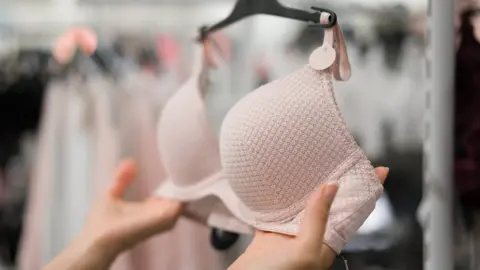 Getty Images
Getty ImagesFew people give much thought to where what they wear beneath their clothes really comes from, and so it was for Elizabeth Gowing, until a recent visit to an underwear factory run by women in northern Albania.
Bras slither from a table, a heap of knickers are piled in a corner. Am I in a brothel? A teenager's bedroom?
When I came to Albania I was warned there was an underworld I might all too easily find myself in, but this is nothing like I was expecting. It's an airy, well-lit industrial unit where 40 workers are intent on combining the intimate details that make up the perfect undergarment.
One table blooms with the padding for bra cups. A sack nearby spills teeny pink rosettes to be sewn on as decoration. Large industrial bobbins of demure white cotton spin and blur like thought bubbles above the heads of the women bent over their machines. One woman is inspecting knicker elastic in a way that in any other context might be considered highly inappropriate.
She is one of over 3,000 people employed in the textile industry in this northern Albanian city. Beneath its imposing Illyrian, then Roman, then Venetian castle, Shkodra has a distinguished literary past. But despite its high-culture heritage and the reputation for intellectualism in the town's tree-lined boulevards, it now majors in producing underwear.
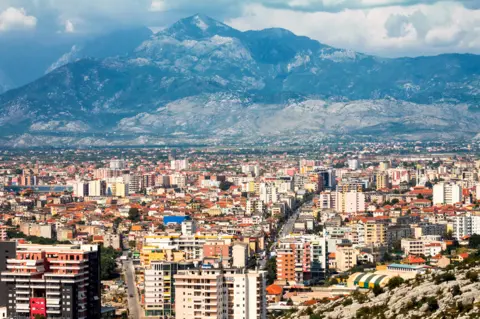 Getty Images
Getty ImagesShkodra has a long tradition of devout Catholicism and this cultural link with Italy strengthens the relationship with Albania's main customer.
Mirela, the owner of the factory I'm visiting, speaks Italian fluently - a legacy of the close, if sometimes uncomfortable, relationship between Albania and its neighbour across the Adriatic.
When the country was occupied by Mussolini, Italian was an official language. Later, during the Communist period in Albania, radios were secretly tuned to Italian channels to hear news of the wider world, so to learn Italian was a way out.
In a different way that is still true today. Mirela says the Italian label she works for subcontracts to six so-called fason, or piecework, factories like hers. They are not the only firm with contracts here, and for this company alone annual production across Shkodra is 16 million garments - enough in itself to support the chests of most of Italy's women.
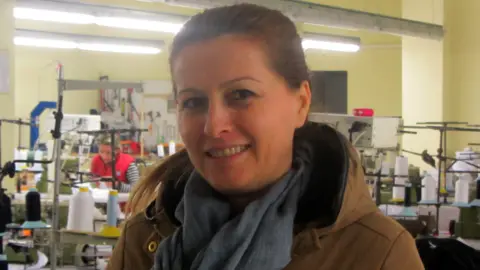
I am suddenly uncomfortably aware of the hands that my underwear has passed through and I ask Mirela more about the people who work here.
"Ninety-five percent of them are women," she says, and adds with a laugh: "Men can't see themselves doing this kind of work."
More than half of Albania's fason businesses are female-owned like this one.

Find out more
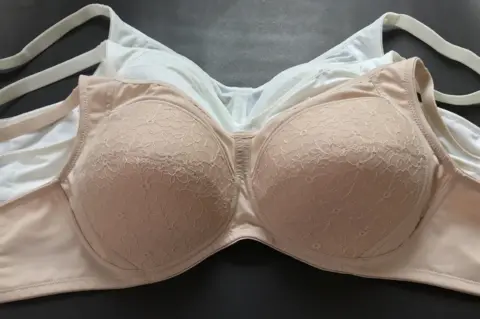 Getty Images
Getty Images- From Our Own Correspondent has insight and analysis from BBC journalists, correspondents and writers from around the world
- Listen on iPlayer, get the podcast or listen on the BBC World Service, or on Radio 4 on Saturdays at 11:30 BST

Mirela herself is a 43-year-old with an MSc in economics and 22 years in the industry. She's scathing about those who don't try to work their way out of poverty.
"We know that it's better to take home something than nothing," she insists.
I'm at the factory out of normal working hours but production is still going on. Mirela talks proudly about how the women working through the evening are making a significant contribution to the economy - textiles are the country's second largest export, after minerals, and the Albanian fasons supply international brands such as Bata and Zara.
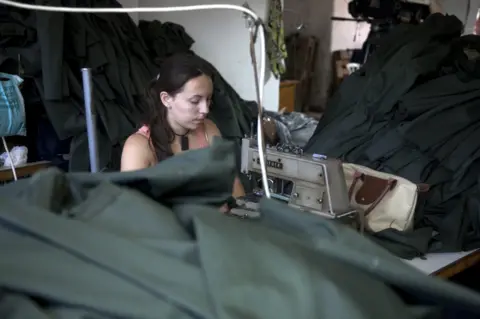 Getty Images
Getty ImagesNevertheless, staring at the luxurious lingerie being constructed around me, I remember that last year Oxfam ranked Albania as 149th out of 152 countries for social inequality.
Wages are low, admits Gjergji Gjika, head of the chamber of commerce. He says that there are nearly 76,000 people employed in fason work across Albania and that it's often women newly arrived in town from the harsh life of the mountain villages who make up the labour force for the industry.
Mirela says it's a struggle to find a permanent workforce as more families emigrate, with women following the pieces that they've made up, and travel to the bright lights of major European markets.
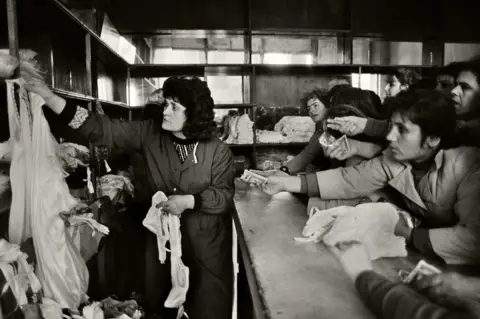 Getty Images
Getty ImagesThere are posters of these distant paradises stuck to the walls in her factory, as backdrops for models posed in beautifully assembled lingerie. The temperature here is low enough for the workers to be hunched over in fleece jackets during my December visit to the factory - a chilly time of year in northern Albania - but the models are never goose-pimpled, just bathed in eternal sunshine.
Shkodra sits in the lee of the vast "Accursed" mountains and that night I look up at these Albanian Alps, the start of the Via Dinarica hiking mega-trail leading north all the way to Slovenia and the EU. They're a mighty limestone bulk where it would be hard to scratch a living.
I undress with new care, thinking of all the mountain girls and the tough businesswomen who clothe us, building up their own dreams, piece by fragile piece.

